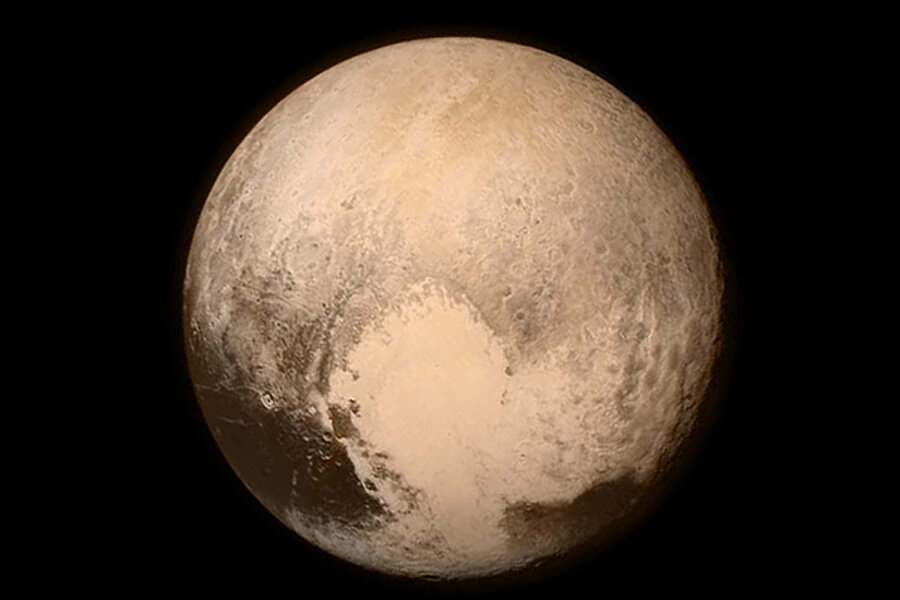New Horizons flyby: Why Pluto matters
Loading...
NASA's long-anticipated flyby of our solar system's erstwhile ninth planet Pluto occurred this morning at 7:49 am EDT, exactly on schedule, despite a slight hiccup on July 4, 2015 when the New Horizons spacecraft entered "safe mode."
Yesterday, NASA’s Alan Stern tweeted, “Not much going on this week. How about a #PlutoFlyby !!”
New Horizons was ambitious from the start; the spacecraft itself was built in four years and two months and “it’s worked essentially flawlessly for the past nine-and-a-half years,” said Dr. Stern on NASA TV during Tuesday's briefing of the historic event. The team building the spacecraft was on a very tight schedule to make the 2006 launch date; missing the launch window would have meant waiting another four years for Earth and Pluto to line up properly again. Stern credits the team for making “a lot of sacrifices” to get the project completed on time.
Just before the flyby, NASA released the most detailed image of the icy dwarf planet that we have seen in human history. The floating marble in space is covered in alternating shades of ruddy, sand-colored patches, and was a mere 12,500 km from the New Horizons’ spacecraft.
The world will have to wait until Wednesday morning at 8:53 am EST (00:53 GMT). This is when NASA is scheduled to receive the trove of information collected from the New Horizons flyby. The most recent measurements sent by the New Horizons indicates that Pluto has a diameter of 2370 km, or 18.5 percent that of Earth.
‘I can't wait to get into the data and really start making sense of it. Right now, we're just standing under the waterfall and enjoying it,’ Stern told BBC News.
The “New Horizons' communications antenna is fixed to the craft, so the craft must reorient itself to properly aim the antenna at Earth. Any attempt to communicate with Earth during the flyby's most critical period would mean pulling the instruments off their targets,” reported The Christian Science Monitor’s Pete Spotts on July 12.
The scientists will spend Tuesday analyzing the images that they have received in order to report back to the world tomorrow morning. Tuesday night, they will also learn how much data has been filling up on the memory cards with data taken 5 billion miles away.
But the mission far from over after today’s flyby; the gold-colored space probe will continue to investigate not only Pluto but also its five moons: Charon, Styx, Nix, Kerberos, and Hydra. Information from NASA has already found that Charon is about the size of Texas, and the “dark north polar region is displaying new and intriguing patterns,” according to the New Horizon’s website.






